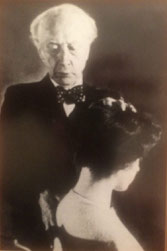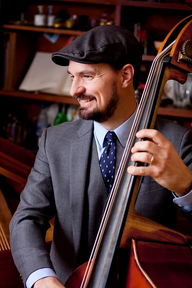ALEXANDER TECHNIQUE
WHAT IS THE ALEXANDER TECHNIQUE?
The Alexander Technique is a conscious practice, a way of inhabiting, experiencing, organizing, and using the body that can improve how we move, breathe, and support ourselves. Neither a form of exercise nor relaxation therapy, the Technique is an educational method in which students learn to find an optimal balance between elastic tone and release within the body’s musculature. The Alexander Technique addresses the coordination of the whole body but pays particular attention to the harmonious integration of the head, neck, and back for more mobility, fuller breathing, and better postural support. Students of the Technique learn to redistribute muscular tone strategically within the body and employ more of the body’s deep spinal muscles to experience sound support from the ground without having to constantly effort themselves up. Over time, students learn to transform patterns of chronic muscular tension that have become unconscious and limiting, and at times even injurious. The Alexander Technique is a means of organizing the body that allows for a more calm yet enlivened sense of the whole self.

IMPROVED PERFORMANCE
Unlike many other body training methods, the Alexander Technique enables students to respond to the demands of performing complex tasks, all while breathing well, moving freely, and supporting themselves with less strain. The Alexander Technique has been referred to as a kind of “pre-technique.” Performing artists including musicians, actors, and dancers have sought out the Technique for decades because of how well it provides the fundamental coordination required by physical and technical activities that demand a high level of performance. The Alexander Technique can be an ideal complement to most forms of training. Performers and athletes often report greater access to their carefully cultivated skills, more confidence, less anxiety, better coordination, higher performance quality, and overall more enjoyment of their craft.
BETTER HEALTH AND WELLNESS
Although the Alexander Technique has long been sought after for its specific benefits to athletes and performing artists, for nearly a century many others have taken Alexander lessons to help cope with more general, everyday conditions such as stress, back discomfort and pain, and overuse injuries. Many individuals take Alexander lessons just for the overall improved sense of well-being they experience during and after lessons. By increasing the reliability of the student's own sensory perception, the Alexander Technique offers the student more choice and a greater ability to self-regulate both on a physiological and psychological level. As lessons progress, students learn to undo habitual patterns of excessive muscular tension and joint compression more on their own. Students often express feeling lighter, more spacious, more mobile, and cheerier.

A TECHNIQUE FOR LIFE
By considering the body more as a whole rather than an accumulation of parts, the Alexander Technique is a systemic approach to improving the whole body’s experience and functioning. Practice of the Technique trains the body (and the mind) to be more elastically available. Many have found that the practice of the Alexander Technique cultivates a calm state of quiet readiness. Monastics of various faiths have found Alexander work to be an excellent aid to contemplation and effective form of meditation in activity. Similar to the practice of mindfulness, the Technique is a way of being in the body that allows one to be conscious and present, connected to the ground and everything around, while remaining continuously open and available.

BACKGROUND
The Alexander Technique is based on the discoveries and teaching of Frederick Matthias ("F.M.") Alexander (1869-1955). Alexander developed his work in response to vocal and breathing problems he encountered as he ventured to become an actor and reciter in Melbourne in the late 19th century.
Cindi treats Alexander's writings as historical texts read critically for reference. She approaches the technique as a
body of practice and theory fully apart from, and opposed to, all racism or bias, including any in the writings of
Alexander himself. Equality and freedom from discrimination are fundamental to the current practice and teaching of the Alexander Technique.

FOR MORE INFORMATION, SEND AN EMAIL

